Mount Callan
Houses within 15km of this house
Displaying 37 houses.
Houses within 15km of Mount Callan
Displaying 37 houses.
| House name | Description | |
|---|---|---|
| Loughburke | This house was originally the home of a branch of the Burke family. In the late 18th century it passed into the possession of the Lucas family who continued to reside there until the mid 19th century. C. and B. Lucas were in occupation in 1814 and Lewis records Lough Burke as the ancient seat of the Burke family ''now occupied by the Lucas family''. At the time of Griffith's Valuation the house was valued at £1 and James Casey was the tenant holding from the Woodwards. | |
| Ennistimon House | In 1786 Wilson refers to this house at "Innistymond" as the seat of Edward O'Brien. Lewis writes in 1837 that Ennistymon Castle was originally a seat of the O'Brien family, descendants of the Earls of Thomond, but was then the residence of Andrew Finucane. By the time of Griffith's Valuation it had passed into Macnamara possession. The O'Brien, Finucane and Macnamara families had all intermarried. The house was valued at £28 in the mid 19th century and held by Captain Francis Macnamara in fee. It remained in Macnamara ownership until the mid 20th century and has been a hotel for many years. The hotel was the property of Mr Brendan O'Regan in the 1940s. |
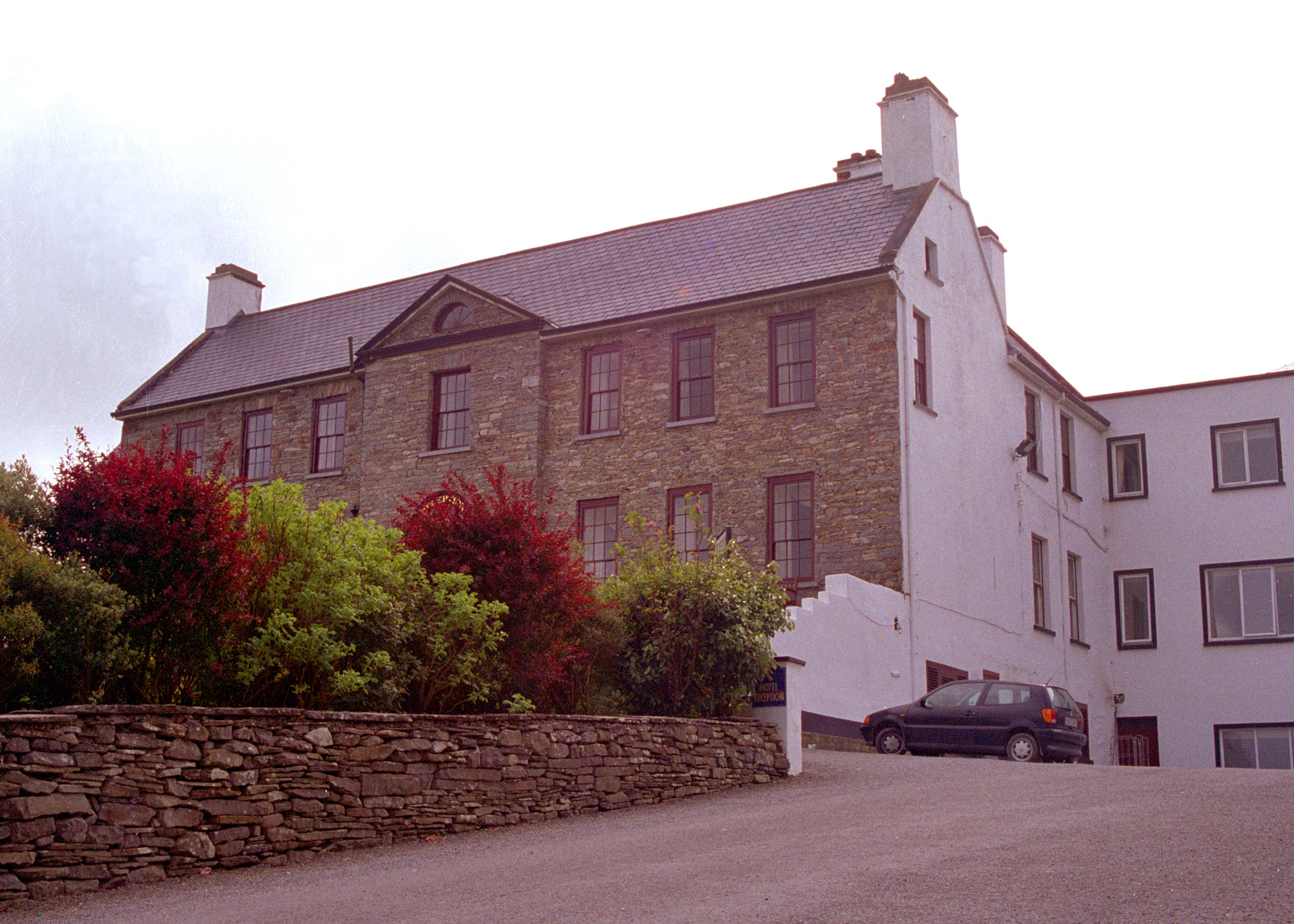
|
| Castlepark House | A house on the Fitzgerald estate, occupied by Charles O'Connell at the time of Griffith's Valuation. The house is labelled Castlepark House on the 1st and subsequent edition Ordnance Survey Maps. Extensive buidling of modern dwellings has taken place in the area in this century. | |
| Moy Lodge | Also known as Carrowgar House, this early 19th century house was built by Sir Augustine Fitzgerald. Possibly the house named 'Moy' occupied by John Finucane in 1814. Lewis describes Moy as the occasional residence of Sir W. Fitzgerald. Weir writes that it was purchased by George Studdert, sixth son of Charles Fitzgerald Studdert of Newmarket House in the mid 19th century. It was still in the possession of Sir Edward Fitzgerald at the time of Griffith's Valuation. In 1894 Slater refers to it as the seat of Major George Studdert but Lady C.E. Fitzgerald was resident in 1906 when the mansion house was valued at £25. Now functions as a guesthouse, a member of 'The Blue Book'. |
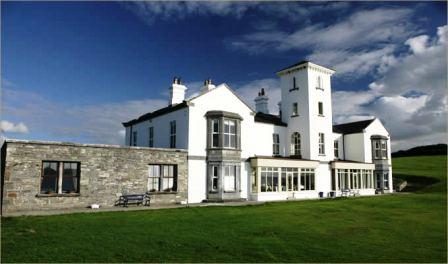
|
| Lehinch House | A house on the Stacpoole estate, possibly the house known as Lahinchy occupied by George Stacpoole in 1814 and by A. Stackpoole in 1837. At the time of Griffith's Valuation the house was valued at £10.10 shillings and was occupied by Thomas Moran who held it from Andrew Stacpoole. Weir writes that it was later a home of the Woulfe family. The house no longer exists, a modern bungalow occupies the site. Old walls and outhouses remain. |
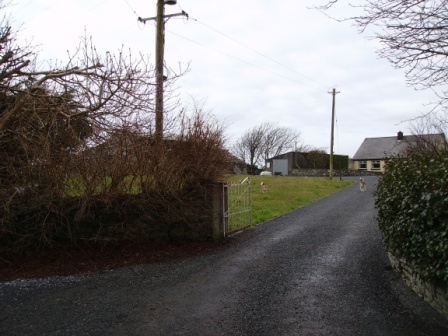
|
| Woodmount | A home of a branch of the Lysaght family in the late eighteenth and into the nineteenth century. In 1786 Wilson refers to it as the seat of Mr. Lysaght. Christopher Lysaght occupied the house in 1814 and G. F. Lysaght in 1837. By the time of Griffith's Valuation a Christopher Lysaght was residing there and he held the property valued at £6 from George Lysaght. | |
| Kilcornan | Originally a Comyn home, by the end of the 18th century Kilcornan was in the possession of the Lysaght family. James Davoren is recorded as resident in 1814. By the time of Griffith's Valuation the house was valued at £1.5 shillings. It is labelled as Kilcornan House on the 1st edition Ordnance Survey map but is not shown on the later 25-inch edition of the 1890s. | |
| Milford | A Morony residence located on the Fitzgerald of Carrigoran estate. Occupied by James Fitzgerald in 1814 and by Edward Morony at the time of Griffith's Valuation. It is labelled Millford House on the 1st and subsequent edition Ordnance Survey maps. A house is still extant at the site. | |
| Westcliff Lodge | Built post 1838, this house was occupied by Henry Vereker at the time of Griffith's Valuation, valued at £11.10 shillings. Henry Vereker of Dublin married Anne Morony of Limerick in 1823. | |
| Seaview | Home of Francis Goold Morony from at least 1837 until the 1870s. He held it from Burdett Morony. The house was valued at £21 and was surrounded by 5 acres. Later inhabited by the Ellis family and sold to the Sisters of Mercy in 1929. |

|
| Wellington | A Morony residence which later passed to the Ellis family, to whom the Moronys were related. In the latter part of the 20th century it was the home of Dr Patrick Hillery, President of Ireland. |
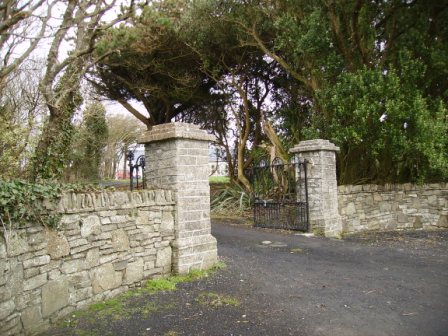
|
| Miltown House | Built in the early 1780s by Thomas J. Morony, who developed the town of Miltown Malbay and the main Morony home throughout the 19th century. Slater refers to it as the residence of Mrs Eleanor Lucinda Moroney in 1894. It was sold about 1919 to the Sisters of Mercy and became a school. |
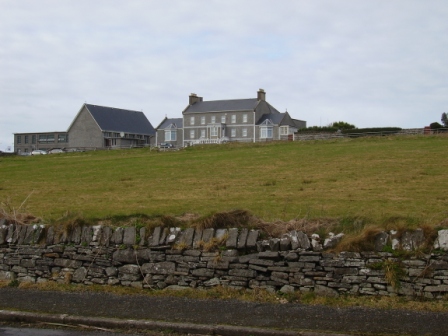
|
| Woodbine Cottage | Also known as Admirals Cottage, this house was a summer residence of the Russell family located on the Morony estate. Passed to the Browning family through marriage with the Russells. The house is no longer extant. | |
| Westpark | Occupied by Thomas J. Morony in 1814. In the mid 20th century the summer home of the McClancy family. | |
| Freagh Castle | Mr Thomas Gorman was resident at 'Freigh', Miltown Malbay in 1814. By the time of Griffith's Valuation Matthias Kenny was the occupier and he held the property from Colonel George Wyndham. The Kenny family continued to live at Freagh until 1970. |
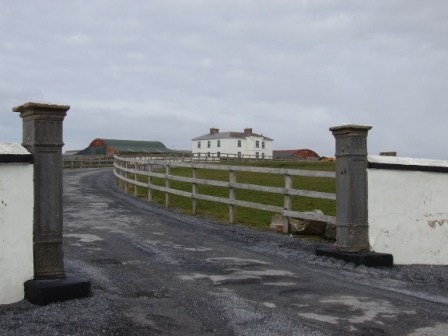
|
| Kildeema | Arthur O'Donnel was resident here in 1814. At the time of Griffith's Valuation William Mathews occupied a house and over 400 acres at Kildeema on the Wyndham estate. There was a tile yard on the property and the buildings were valued at £35. The Mathews continued to live here into the 20th century. |
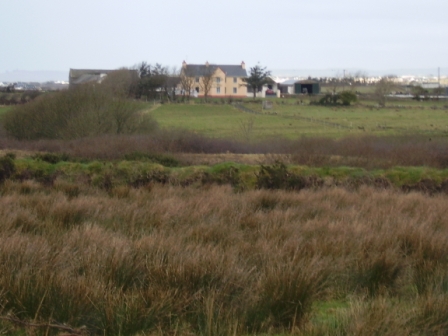
|
| Carrowduff | Two houses are marked in the townland of Carrowduff on the first Ordnance Survey map. One was 'in ruins', R055 764. The other was named Emma Ville. At the time of Griffith's Valuation John Gray held a house valued at £15 and 56 acres from the Wyndham estate in this townland. Carrowduff House appears to have been renovated as it is labelled on both the 25-inch 1890s and the 1942 edition of the Ordnance Survey map. Neither house is extant now. | |
| Applevale | Neptune Blood of Applevale was the third son of William Blood of Roxton and Ann Chadwick and they lived at Applevale in the late 18th century. Their son William was murdered at Applevale in 1831 by the Terry Alts. Chartres Brew lived in the house in 1814 and George Davis in 1837 and in the 1850s. William Blood's mother was a Davis of Newcastle, county Galway.The house was leased to Michael Houlihan in 1870. This house is now a ruin. | |
| Roxton | One of the main homes of the Blood family from the mid 18th century. Wilson refers to it as the seat of W. Blood in 1786. The residence of the Reverend Frederick Blood in 1814, of Thomas Blood in 1837 and held in fee by his son, Frederick William Blood, at the time of Griffith's Valuation. By the 1870s Roxton was the home of William Darling Wilson. In ruins at the end of the 20th century. | |
| Carhoo | A part of the Synge estates from the 18th century, the residence of E. Synge in 1837. The house was occupied by John Rutherford at the time of Griffith's Valuation and valued at £12. A house is still extant at the site. |
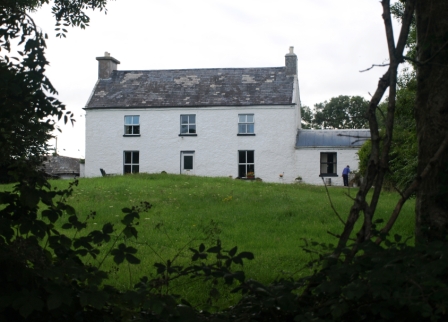
|
| Annagh | The townland of Annagh was in the possession of the Stacpooles from the early 18th century and the house was probably built in the second decade of that century. In the 1770s William Stacpoole moved from Annagh to Eden Vale. Thomas Heher was living in the house in 1814 and by the time of Griffith's Valuation George Brew was resident. The house was a ruin in the early 20th century. | |
| Berry Lodge | A house on the Stacpoole estate, occupied by Francis Woulf in 1814 and by a member of the O'Dwyer family in the mid 19th century. This house is still a residence. |

|
| Quilty House or Salus House | Summer residence of the Crowe family, this house is marked on the first Ordnance Survey map of 1842. It was valued at £25 at the time of Griffith's Valuation and recorded as a mansion house in 1906. It is labelled Salus House on subsequent Ordnance Survey maps but is no longer extant. | |
| Tromra | A house situated just south of the village of Quilty held from the Mahons. At the time of Griffith's Valuation this house was occupied by Admiral Sir Burton Macnamara baronet, the sixth son of Francis Macnamara of Doolin. It was valued at £18. A house of £9 valuation across the road from his residence was known as Tromra Lodge and was occupied by Lieutenant J. Morris of the Royal Navy at this time, grid reference R019 742. Neither house exists any longer. | |
| Mulvihill House | Built by the Mulvilhill family, it was their home in the 18th and 19th centuries. Occupied by Daniel Mulvihill in 1814. Charles Mulvihill was a magistrate in county Clare in 1846. By the time of Griffith's Valuation James F. Clarke was leasing the house from Colonel George Wyndham, when it was valued at £14. The house is no longer occupied. | |
| Ballymacooda | A house valued at £15 at the time of Griffith's Valuation when it was in the possession of Michael Finucane who held it from Nicholas Westby. Passed into the ownership of the Commane family in the 20th century. [Grid reference is approximate] | |
| Woodstock House | A 19th century house beside the golf course at Ennis, this house belonged to the Cullinan family at the time of Griffith's Valuation. A house and leisure centre have been constructed on the demesne lands. | |
| Bushypark | A house located to the west of the town of Ennis which belonged to the Macnamaras of Ennistymon for most of the 18th and 19th centuries. Occupied by David Power in 1814. The house and 68 acres were leased to Thomas Cullinan in the 1850s. Buildings at Bushypark were valued at £18 where William J. MacNamara held 68 acres of untenanted land. The house is still occupied. | |
| Shanvogh | Weir describes this house as 18th century. It was occupied by Timothy Cullinan at the time of Griffith's Valuation. He held it from the Marquess of Conyngham and it was valued at £12. The house is still extant. | |
| Beech Park | An early 19th century house, the home of Marcus Keane and his family in the 19th century. Griffith's Valuation shows that he held the property from the representatives of Michael Finucane and it was valued at £20. The house was still in the possession of Marcus Keane in 1906. The house is no longer extant. | |
| Cragleagh | A Mahon house at the end of the 18th century, occupied by Thomas Pilkington in 1814 and by William Kenny at the time of Griffith's Valuation. Kenny held the property from Charles James/Janns and it was valued at £20. | |
| Merville House | Occupied by John Carroll in 1837 and held by him in fee at the time of Griffith' s Valuation. Weir writes that the house was in ruins by 1904. |

|
| Willbrook | This house was originally an Adams home, the Adams and Brews intermarried. In 1837 W.A. Brew lived here. At the time of Griffith's Valuation the buildings were valued at £5 and the house was occupied by Austin Moran and held from Lord George Quin. In the early 20th century it was the home of the Corbett family. Weir writes that the house was burnt down during the "Troubles". The present residence which was bought in the mid 20th century by Louis de Brocquy was constructed out of the stables. | |
| Doolough Lodge | At the time of Griffith's Valuation Matthew Kelly [of Kilrush] held a herd's house valued at £3 and 201 acres from Edward O'Brien at Treanmanagh. The house dates from about the mid 19th century and was the Irish home of Matthew's son General Sir Thomas Kelly Kenny. Weir writes that the General had King George V to stay in the house following the King's coronation in 1910. | |
| Fairy Hill | James O'Brien was living in this house in 1814 and it remained in the possession of O'Briens until the 1860s. Valued at £5 at the time of Griffith's Valuation when the Reverend Daniel Lynch was in residence. Occupied by the Lynch family in the 20th century. | |
| Rivoli | Weir describes Rivoli as a late 19th century house to which James Shannon's family moved from nearby Derry House in the second half of the 19th century. It was a home of the Hunt family in the early 20th century. | |
| Mollaneen House | Weir writes that this was an 18th century house. "Dysert" was occupied by Thady Brew in 1814. At the time of Griffith's Valuation George Fitzgerald held a house valued at £5 from Francis H. Synge in the townland of Mollaneen. Local sources suggest that this house was frequently occupied by the agent to the Synge estate. Weir writes that the roof of the house was removed in the mid 20th century. It has, however, since been restored and is now known again as Mollaneen House. |

